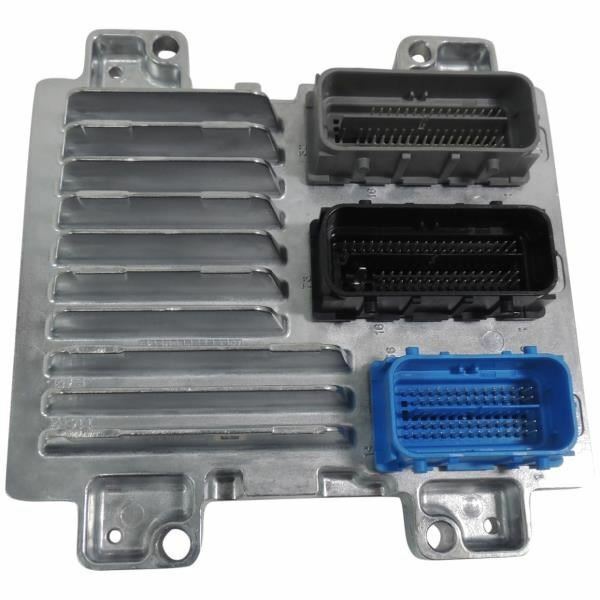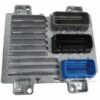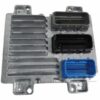Restore Peak Performance to Your GM Vehicle
Is your Chevrolet Sonic, Cruze, or other GM vehicle running rough, stalling unexpectedly, or flashing a persistent Check Engine Light? As a technician with over two decades of experience under the hood, I’ve seen firsthand how a failing Engine Control Module (ECM) can cause a cascade of frustrating and hard-to-diagnose problems. The ECM is the brain of your engine, managing everything from fuel mixture and ignition timing to transmission shifting. When it fails, your vehicle’s performance, reliability, and fuel economy suffer dramatically. This isn’t just an inconvenience; it’s a critical component failure that needs a reliable solution.
This is not just a replacement part; it’s a complete, ready-to-install solution. We take the guesswork and high dealership costs out of the equation. Each 2012-2016 Sonic Engine Control Module is professionally programmed to your vehicle’s specific Vehicle Identification Number (VIN) before it ships. This means it arrives at your door loaded with the latest GM software updates, ready for a straightforward installation. You get a component that communicates flawlessly with your vehicle’s other systems, restoring the smooth, efficient operation you expect.
Case Study: The Ghost in the Machine
A customer brought in a 2014 Chevy Cruze with a maddeningly intermittent no-start condition. It would work perfectly for days, then refuse to crank. There were no consistent trouble codes, just a history of random communication errors (U-codes). After hours of chasing wires and testing sensors, we focused on the ECM. On the bench, we found a microscopic crack in a solder joint on the main processor, likely caused by years of heat cycles. Instead of a costly and time-consuming dealer replacement, we sourced a pre-programmed module like this one. The installation took less than an hour, and the car has been running without a single issue for over a year. This is a classic example of how a failing ECM can mimic dozens of other problems, and why a reliable, pre-programmed part is the most efficient fix.
Is Your GM Vehicle Showing These ECM Failure Signs?
A faulty ECM can manifest in numerous ways. If you’re experiencing any of the following, a failing engine computer could be the culprit. I’ve seen these symptoms countless times in my shop, often accompanied by specific Diagnostic Trouble Codes (DTCs).
- ✔ Check Engine Light is illuminated with codes like P0601 (Internal Control Module Memory Check Sum Error), P0606 (ECM/PCM Processor Fault), or various communication codes (U0100, U0101).
- ✔ The engine cranks but refuses to start, or starts and immediately stalls.
- ✔ Noticeable decrease in fuel efficiency for no apparent reason.
- ✔ Rough or erratic idling and poor engine performance.
- ✔ Harsh or delayed automatic transmission shifting.
- ✔ Intermittent electrical issues that seem to have no source.
- ✔ The vehicle goes into “limp mode,” with reduced power.
Your Straightforward ECM Installation Guide
Replacing your ECM is a manageable job for a confident DIYer. By following these steps carefully, you can get your vehicle back to factory-spec performance without a trip to the shop. Always consult a repair manual specific to your vehicle for torque specs and detailed diagrams.
- Safety First: Disconnect the negative terminal from your vehicle’s battery and secure it away from the post to prevent any accidental reconnection.
- Locate the ECM: On most compatible vehicles like the Sonic or Cruze, the ECM is located in the engine bay, often near the battery or firewall. It’s a metal box with several large electrical connectors.
- Disconnect the Connectors: Carefully release the locking tabs on the wiring harness connectors and pull them straight out from the ECM. Avoid pulling on the wires themselves. Some connectors have lever-style locks that need to be swung open.
- Remove the Old Module: Unbolt the mounting hardware that secures the old ECM to its bracket or the vehicle body. Note the orientation of the module before removing it.
- Install the New Module: Mount your new, pre-programmed ECM in the same location and orientation as the old one. Secure it with the original mounting hardware.
- Reconnect Everything: Firmly plug the wiring harness connectors back into the new ECM until they click and the locking tabs are engaged. Reconnect the negative battery terminal.
- Perform Relearn (If Necessary): While this module is programmed, some vehicles require a brief security or crank position sensor relearn procedure. This can often be done without special tools (e.g., turning the key to ‘On’ for 10-15 minutes). Check your vehicle’s specific procedure. You’re now ready to start the engine and enjoy restored performance!
Verified Fitment Across Multiple GM Models
This Engine Control Module, part number 12643636, is a direct replacement for a wide array of General Motors vehicles. It is also interchangeable with part numbers 12668866, 12668994, 12663405, 12670335, 22819494, and 12692200. Please verify your part number or contact us with your VIN to ensure perfect compatibility.
Fits Models Including:
- Chevrolet Sonic (2012-2016)
- Chevrolet Cruze (2012-2016)
- Chevrolet Trax (2013-2016)
- Chevrolet Volt (2011-2015)
- Chevrolet Spark (2014-2015)
- Chevrolet Express / GMC Savana Vans (2016 with 4.8L, 6.0L)
- Chevrolet Silverado / GMC Sierra 2500/3500 (2012-2016 with 6.0L)
- Buick Encore (2013-2016)
- Cadillac ELR (2014-2016)
- And more. Please check the detailed fitment list or message us for confirmation.
Frequently Asked Questions About Your ECM Replacement
Frequently Asked Questions
Do I need to do any additional programming after I receive this ECM?
No. This module is fully programmed to your vehicle’s VIN before we ship it. In most cases, it is a plug-and-play installation. Some vehicles may require a simple, tool-free security relearn procedure which we can provide instructions for.
How do I provide my VIN number?
After you complete your purchase, simply send us a message with your 17-digit VIN. We cannot program and ship your module without it. You can find your VIN on your vehicle’s dashboard (visible through the windshield) or on your registration and insurance documents.
What is the difference between an ECM, PCM, and ECU?
These terms are often used interchangeably. ECM (Engine Control Module) and ECU (Engine Control Unit) typically refer to the computer controlling the engine. PCM (Powertrain Control Module) is a more inclusive term for a module that controls both the engine and the automatic transmission. For the vehicles listed, this module serves as the primary powertrain computer.
Will this fix my car’s transmission shifting problems?
In many modern vehicles, the ECM/PCM is responsible for transmission control. If your shifting issues are caused by faulty signals or processing errors from the computer, then yes, replacing the module can resolve them. However, it will not fix internal mechanical failures within the transmission itself.
How can I be sure this is the correct part for my vehicle?
The best way is to match the part number from your existing module to one of the compatible numbers listed (e.g., 12643636, 12668866). If you cannot access your module or are unsure, please send us your VIN, and our experts will verify the exact fitment for you.



